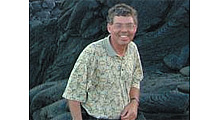U.S. and Canada Draft Spectrum Sharing Agreements

The FCC has reached an agreement with Industry Canada on spectrum sharing along the U.S.-Canada border. The announcement did not mention any agreement on repacking TV channels or wireless broadband use of current TV channels near the border. One of the three agreements, “Arrangement V” covers fixed service spectrum sharing in the 71-76 GHz, 81-86 GHz, 92-94 GHz and 94.1-95 GHz bands.
Another agreement is a “Statement of Intent” allowing for THE creation of a nationwide digital system covering the sharing and coordination of spectrum for the establishment and operation of general air-ground services. The frequencies involved are 454.6625-454.98975 MHz and 459.6625-459.9875 MHz.
The last agreement is “Arrangement U”, covering the 896-901 MHz and 935-940 MHz bands used by the Specialized Mobile Radio Services and business/industrial radio services primarily for voice communications. Arrangement U governs sharing and coordination of these services within 100 km of the common border and will simply the criteria for permitting secondary users in the band, enabled more efficient use of the spectrum while protecting primary users.
The announcement hinted a larger agreement was in the work, perhaps one covering the UHF TV frequencies, when it stated, “Because Arrangement U may become part of a larger treaty or replacement agreement governing services operating above 30 MHz, the operational provisions of Arrangement U will be applied on an interim basis pending further review by legal officers.”
The arrangements and exchange of letters can be viewed here.
Get the TV Tech Newsletter
The professional video industry's #1 source for news, trends and product and tech information. Sign up below.

Doug Lung is one of America's foremost authorities on broadcast RF technology. As vice president of Broadcast Technology for NBCUniversal Local, H. Douglas Lung leads NBC and Telemundo-owned stations’ RF and transmission affairs, including microwave, radars, satellite uplinks, and FCC technical filings. Beginning his career in 1976 at KSCI in Los Angeles, Lung has nearly 50 years of experience in broadcast television engineering. Beginning in 1985, he led the engineering department for what was to become the Telemundo network and station group, assisting in the design, construction and installation of the company’s broadcast and cable facilities. Other projects include work on the launch of Hawaii’s first UHF TV station, the rollout and testing of the ATSC mobile-handheld standard, and software development related to the incentive auction TV spectrum repack. A longtime columnist for TV Technology, Doug is also a regular contributor to IEEE Broadcast Technology. He is the recipient of the 2023 NAB Television Engineering Award. He also received a Tech Leadership Award from TV Tech publisher Future plc in 2021 and is a member of the IEEE Broadcast Technology Society and the Society of Broadcast Engineers.
